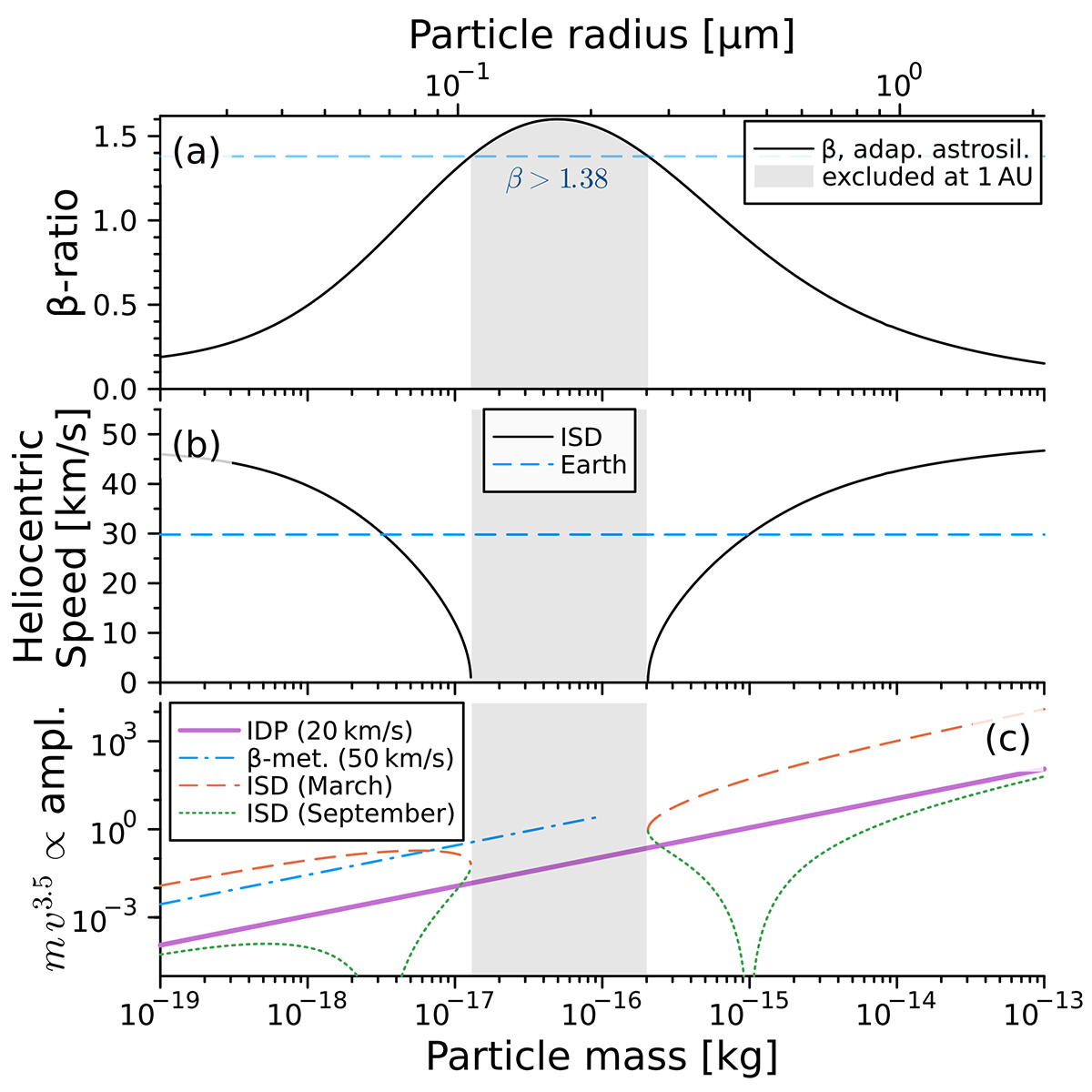Fig. 1.

Download original image
Relevant dust properties versus particle mass. Top panel: β-ratio versus particle mass following the astronomical silicates of Gustafson (1994) adapted to have a maximum of β = 1.6 (Sterken et al. 2013). Middle panel: Subsequent heliocentric speed of ISD particles (solid black curve) dependent on the particle mass using Eq. (4); Earth’s orbital speed (dashed blue line) for comparison. Bottom panel: Signal amplitude of a single dust particle, taken as m v3.5 as per Eq. (3), for an IDP with an impact speed of 20 km/s (solid magenta line), a β-meteoroid of 50 km/s (dash-dotted blue line), and an ISD particle in March (dashed red curve) and in September (dotted green curve). No line was plotted for β-meteoroids above m > 10−16 kg because β-meteoroids are constrained to lower masses (Wehry & Mann 1999; Moorhead 2021). The secondary horizontal axis of the top panel gives the particle radius, assuming spherical and compact particles with a density of 2500 kg/m3 (Sterken et al. 2013). ISD with β > 1.38 (dashed blue horizontal in the top panel) cannot reach Earth’s orbit; it is excluded (grey-shaded area).
Current usage metrics show cumulative count of Article Views (full-text article views including HTML views, PDF and ePub downloads, according to the available data) and Abstracts Views on Vision4Press platform.
Data correspond to usage on the plateform after 2015. The current usage metrics is available 48-96 hours after online publication and is updated daily on week days.
Initial download of the metrics may take a while.


